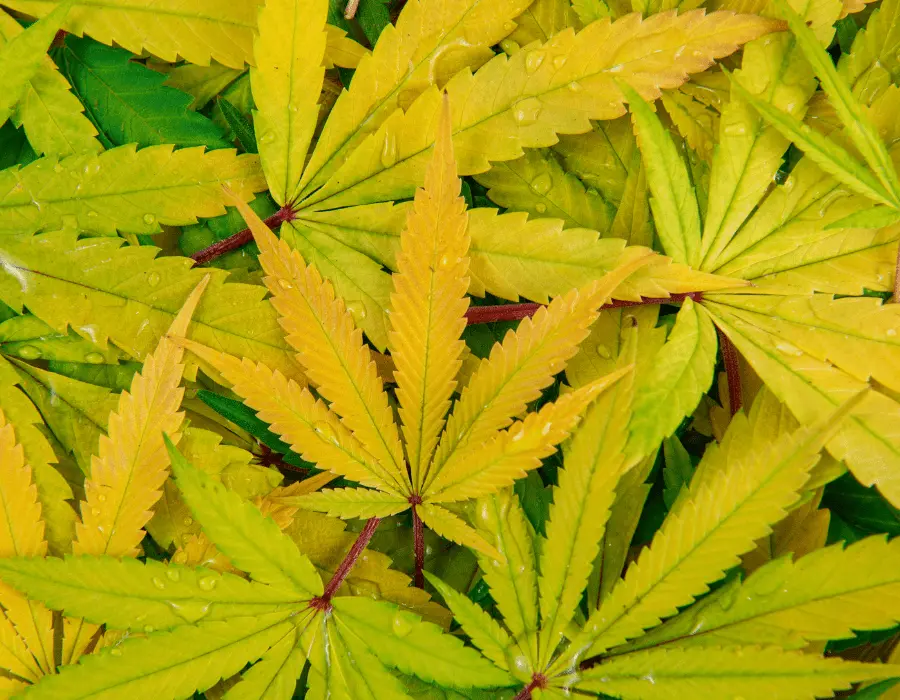Poor growing practices: pH, watering, temperature
Chlorosis can result from negligence on the part of the grower just as much as it can be caused by pests and unpredictable environmental conditions. The most common causes of yellow leaves due to poor growing practices are nutrient lockout caused by pH imbalance, water stress from over or under-watering, and temperature problems. The grower can resolve these issues with a critical assessment of their growing style and their plants’ growing conditions.
The nutrient absorbing capabilities of cannabis plants can be hindered despite the availability of nutrients at the level of the root system if the grower is not careful about maintaining the optimal pH of their growing medium or substrate. This can cause marijuana weed leaves to turn yellow, as nutrients such as nitrogen, zinc, and magnesium are needed in the production of chlorophyll. This is known as “nutrient lockout”.
The grower can solve nutrient lockout by measuring the pH of their water and/or nutrient solution using a pH meter or testing kit and then increasing acidity or alkalinity until it is between the pH level of 5.8 and 6.2 (no higher than 6 for hydroponics). Not only will optimal pH maximise nutrient absorption and prevent leaves from turning yellow, but it will also save the grower money and resources by preventing waste of nutrient feed.
It would benefit the grower to pH their water as well, as pH can fluctuate throughout the year depending on rainfall and any treatments applied by the water supplier.
Yellow leaves can also indicate stress from over or under-watering. Water-stress-induced chlorosis is usually a secondary indicator, meaning that to get to the stage of yellowing leaves, the plants will have been stressed for some time. The easiest way for the grower to diagnose over-watering is by observing their plants and growing medium.
Over-watered plants will exhibit firm, droopy leaves even after watering. Leaves will feel “heavy” and “full” as they are experiencing an oversaturation of water. Curling is common and not limited to the leaf tips, but rather the entire leaf. Over-watering may also cause root rot.
One way for cannabis growers to diagnose over-watering is by lifting their plant pots. If the pots are heavy to lift, especially two or three days after watering, then it is likely that the plants are being given too much water. Another method for growers using soil is to dig under the surface (up to the first knuckle after the fingertip) and to check how moist that layer is. If the soil is quite wet after several days, there’s a good chance it has been overwatered.
Growers can get over-watered plants back on schedule by letting their plants dry out over a few days while making sure to regularly scout their plants for any water stress-induced illnesses or pests. When restarting the watering schedule, keep track of the moisture level of the top of the growing medium. The goal is to water cannabis plants every two to three days.
Yellow leaves can also be the result of under-watering, but growers will be able to tell that their plants have had little water since they will notice the droop or even wilting before any chlorosis sets in. Even though cannabis plants prefer soil that dries out a little bit between waterings, it is best to give them the right amount of water to keep them in good shape.
Marijuana leaves can also yellow in response to heat stress. This is solved using a thermometer to keep the growing environment between 18C and 28C. The grower can also implement fans in their grow rooms to promote air circulation and make sure no hot spots develop as a result of grow lights. Heat mats or even rugs can be used to make sure plants stay warm in the evenings.
